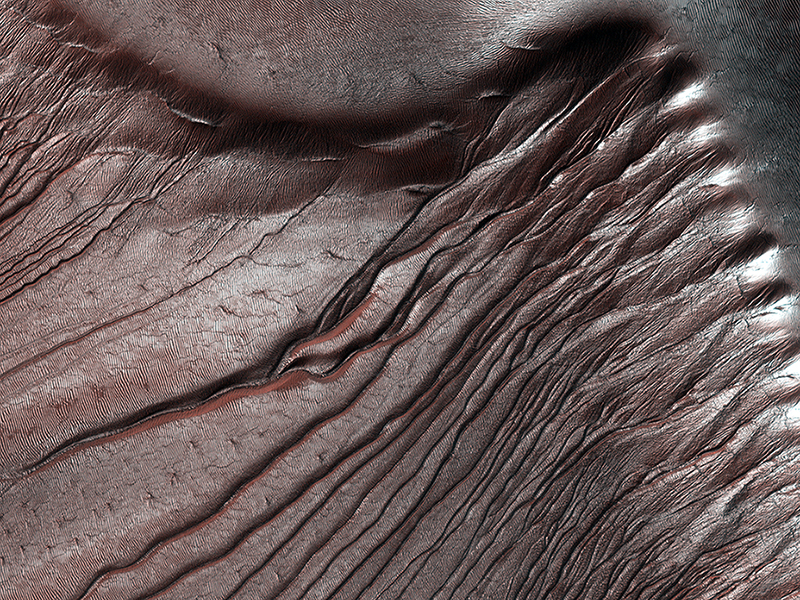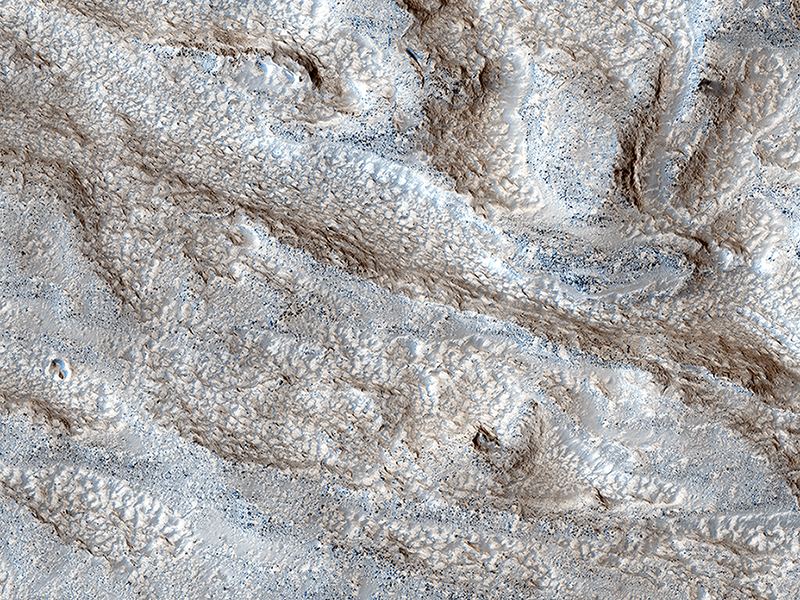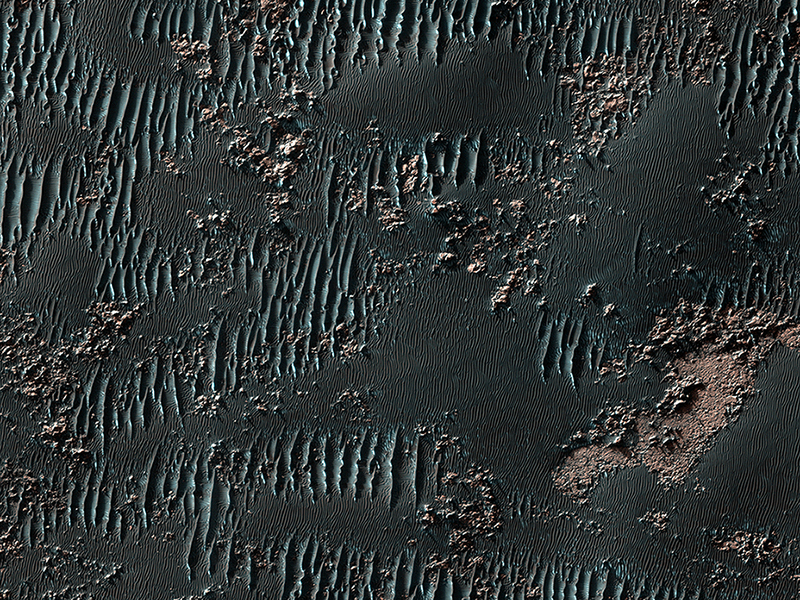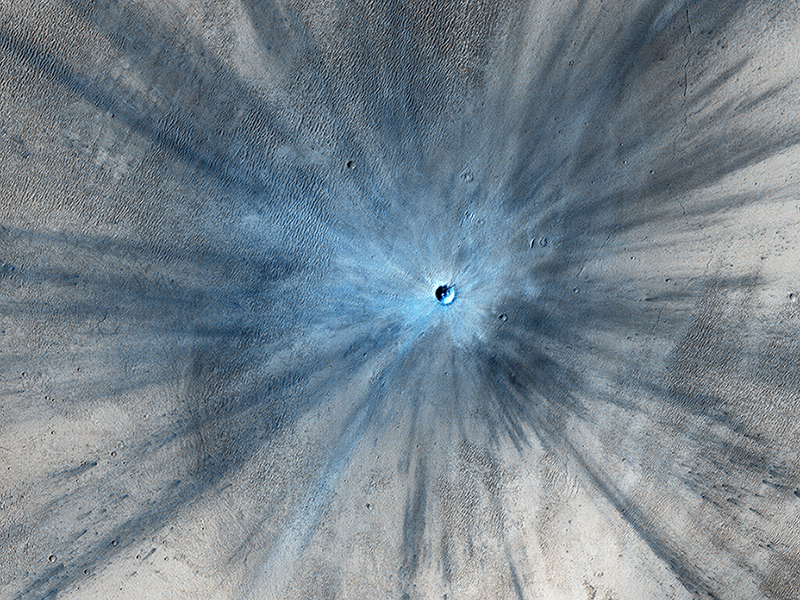HiRISE Science Team wrote:Fall Frost Accumulation on Russell Crater Dunes (ESP_034234_1255) (HiClip)
Russell Crater dunes are a favorite target for HiRISE images not only because of their incredible beauty, but for how we can measure the accumulation of frost year after year in the fall, and its disappearance in the spring.
The frost is, of course, carbon dioxide ice that often sublimates (going directly from a solid to a gas) during the Martian spring. HiRISE takes images of the same areas on Mars in order to study seasonal changes like this. In an area like Russell Crater--a very ancient impact crater about 140 kilometers in diameter--we can follow changes in the terrain by comparing images taken at different times. This helps give us a better understanding of active processes on the Red Planet.
HiRISE Science Team wrote:Channels in Phlegra Montes (ESP_034228_2150) (HiClip)
The objective of this observation is to determine the nature of a group of what appears to be channels that trend in a west-east direction. There is also a mound with a mantle that appears to have layers.
Also visible in a Context Camera image, pictures like this can help us understand the fluvial and climate history of ancient Mars.
Alfred McEwen wrote:Squiggly Sand Dunes (ESP_034801_1300) (HiClip)
It is now late Northern spring on Mars, so the Southern middle latitudes get very low-sun illumination that accentuates subtle topography.
This image shows sand dunes mixed with rock outcrops on the floor of a large crater. Some of the dunes have squiggly crests, which is unusual. It looks like this is due to the outcrops, which anchor the dune in places as they migrate.
Cathy Weitz wrote:A Spectacular New Impact Crater and Its Ejecta (ESP_034285_1835) (HiClip)
Context Camera (CTX) images showed a likely new impact crater formed at this location between July 2010 and May 2012, and now a HiRISE image provides details about this recent impact event.
Our image shows a large, rayed blast zone and far-flung secondary material around an approximately 30 meter-diameter crater, indicating a large explosion threw debris as far as 15 kilometers in distance. Because the terrain where the crater formed is dusty, the fresh crater appears blue in the enhanced color due to the lack of reddish dust.
By examining the distribution of ejecta around the crater, scientists can learn more about the impact event.
Credit: NASA/JPL/University of Arizona
<< Previous HiRISE Update



